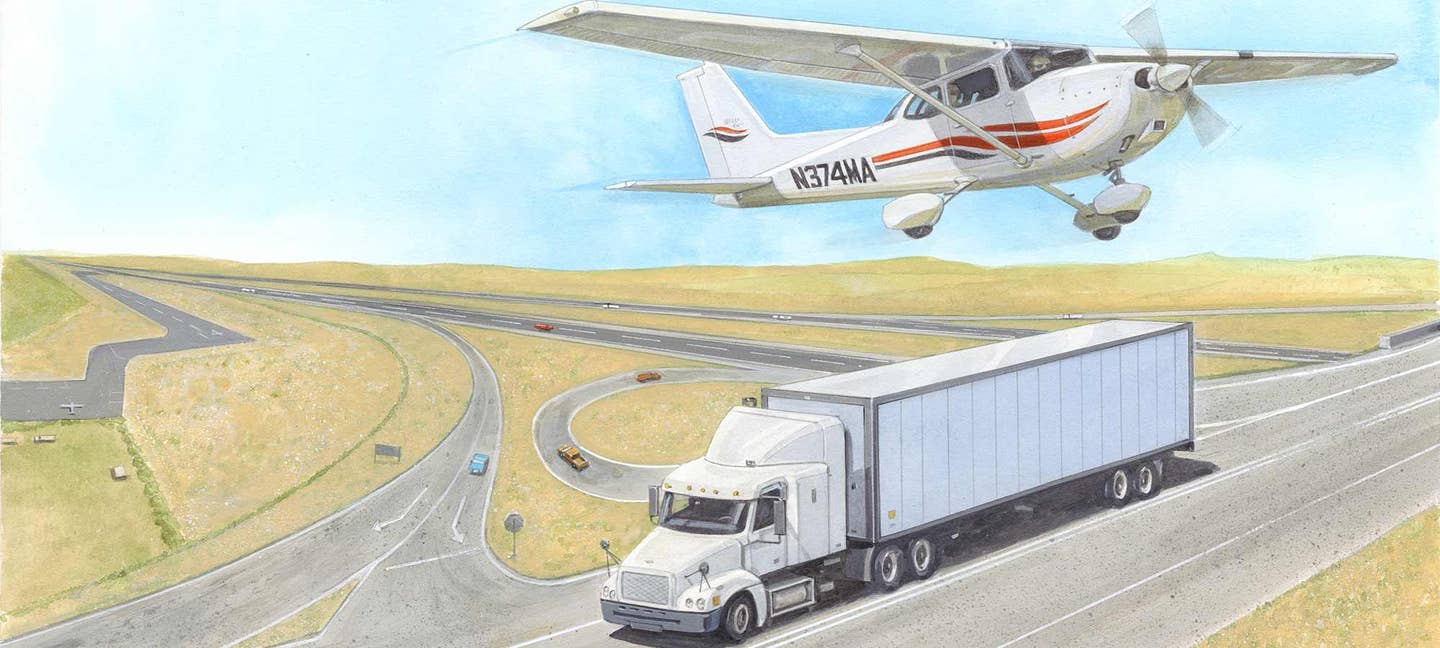
About halfway between San Francisco and Los Angeles, in California’s vast Central Valley, lies Harris Ranch, an unlikely and welcoming island on an otherwise uninterrupted sea of drab and dusty farmland.
The “ranch” is actually a complex of steak restaurants, a hotel, gas station and other amenities designed as a destination rest stop for drivers on Interstate 5, the busy asphalt ribbon stretching from Mexico to Canada. Depending on which way the wind is blowing, the hot, dry air can be pungent with the heady aroma of the ranch’s vast feedlot, where thousands of head of beef cattle await their certain doom and whence its dizzying array of thick, fresh USDA steaks derives.
For aviators, Harris Ranch is home to a 2,800-foot lighted runway and plenty of free tiedowns, making it a popular destination for the $100 hamburger, or in this case, the $150 rib-eye.
On this particular July day, the temperature hovered around 108 degrees, with a hot westerly breeze blowing more or less down Runway 32. With no weather-reporting facility available, I anticipated that the high density altitude, combined with a relatively short runway, might challenge the 180 hp Skyhawk with three well-fed adults aboard. So I made the decision not to add fuel, precisely calculating our fuel burn back to Santa Rosa, about 182 nm northwest. More on that in a moment.
The pilot’s operating handbook indicated that, even at a temperature of 104 degrees Fahrenheit, there would be enough pavement to allow 550 pounds of passengers and 24 gallons of fuel to lift off and gain sufficient altitude before reaching the elevated freeway overpass a couple hundred yards past the departure end of Runway 32. What the POH failed to mention was the different pitch “picture” required to climb out on such a hot day.
As we accelerated to rotation speed, my eyes were glued to the diminishing amount of pavement ahead of us.
I pulled the yoke back and felt the lumbering plane lift off, just as the runway disappeared and was replaced by the sizzling desertlike sand and sagebrush that dominate the surrounding landscape. Relieved to be aloft, I was jolted by the sudden whine of the stall horn. A quick glance at our airspeed showed us flirting with 50 — a good 10 knots slower than the rotation speed I’d observed just seconds before. Instinctively, I dropped the nose, quieting the stall warning but now aligning us with the broadside of an 18-wheeler on the I-5 overpass. Maybe it was the heat distorting the image, but that tractor-trailer looked 30 feet tall.
With a visual picture much closer to cruise than normal takeoff attitude, we managed to clear the semi with room to spare and were on our way. Our direct route to Santa Rosa would take us through San Francisco’s Class B airspace. In the dozens of trips I’ve made over the city, I’ve never been denied the Bravo transition, and had no reason to suspect anything different this time. Which is why I planned a flight with just 24 gallons of fuel on board — light enough to take off with just enough for the two-hour flight, a moderate headwind and a double-than-legal one-hour reserve. When the NorCal approach controller failed to utter the magic words “cleared into Bravo” and handed us off, we were already under the Class B shelf. When the next controller abruptly advised us to remain outside Bravo, my fuel calculations predicated on direct routing were suddenly invalid. We turned northward, dropped down to 4,500 feet to remain below the approaching layer of the upside-down wedding cake and added a good 10 minutes to our route as we flew just outside the Class B perimeter.
Now my eyes were glued to the untrustworthy fuel gauges, both dancing around the five-gallon mark. By the time the second low-fuel warning light illuminated, Santa Rosa was in sight. Out of curiosity I dipped the tanks after our normal landing and was heartened to find about seven gallons — within the 30-minute daytime VFR requirement but less than my one-hour personal minimum.
I learned two valuable lessons on this flight. First, confirming takeoff performance in the POH with the amount of available runway is necessary but not sufficient. Other variables, such as exceedingly hot weather, require changes to what we usually expect — in this case, pitch attitude on climb-out. My second lesson that day also concerned expectations, this time about routing and the need to add an extra margin of fuel for when things don’t go exactly as planned.
Harris Ranch may be a delicious lunchtime destination (especially with the 10 percent discount they offer to those arriving by air), but when things don’t go quite as expected, the aftertaste can be unpleasant.

Sign-up for newsletters & special offers!
Get the latest FLYING stories & special offers delivered directly to your inbox






